Understanding the RDF/SIGINT Dangers of the Modern World
This is a repost of an article I wrote back in 2022 for another radio group. Bear in mind this is before we had the Ukraine-Russian war to draw conclusions from. The technology I reference below is referenced openly throughout the Internet, and links are provided as much as possible. The wary reader should draw some interesting conclusions from the fact that the capabilities of these systems are publicly known and what the means for the current capabilities of modern military/government/intelligence forces. This is strictly meant as a thought-provoking exercise, and my own conclusions will be further expounded on in an upcoming article.
Whether your envisioned opponent is a nation-state, such as the fabled Russian invasion (Go Wolverines!), a nation-state backed opponent such as Hamas, or even a group of radicals from the opposite side of the political aisle, those guys do not take a day off. They are training hard and are committed to using every advantage they can get to win. You should be doing the same.
This repost has been edited with updated links where available, and for grammar. Enjoy!
-Midwest Field Ops
Understanding Their Capabilities and Assessing Our Own
02/20/2022
I have recently been re-reading Jack Carr's novels The Terminal List and True Believer. In those books, the protagonist Reece wishes for support from Special Reconnaissance (SR) at a couple of points, which led me down a rabbit hole exploring exactly what SR teams can do, followed by more deep dives into the topics I'll cover today. This led to an eye opening understanding of our military's capabilities, especially in the area of electronic surveillance and Signals Intelligence (SIGINT). Until now, I've heard little about our satellite-, aircraft/drone-, and vehicle-based SIGINT systems be discussed. The discussion I have heard has often been based on the concept of radio direction finding and the techniques for mitigating our signals to avoid detection and interception. Please understand that while this is a lengthy post, it is not intended to be a detailed discussion of any of the topics presented. Instead, it is meant to provide an overview of the capabilities we need to be aware of, and provide some thoughts and information on how to mitigate risk while operating despite these capabilities.
There are three main areas we need to be aware of, that are rarely discussed in terms of a combined approach. Those areas are small units of dedicated SIGINT operators, air-based systems (both satellite and drone-based), and remote sensors.
First off, let’s discuss the capabilities and equipment of man portable SR SIGINT teams. Let's start this discussion with the personnel and their skill-sets. Quoting from Wikipedia, "If there is a ground SIGINT requirement deep behind enemy lines, an appropriate technical detachment may be attached to the SR element. For SIGINT operations, the basic augmentation to United States Marine Corps Force Reconnaissance (Force Recon) is a 6-man detachment from a Radio Reconnaissance Platoon. There is a SIGINT platoon within the Intelligence Company of the new Marine Special Operations Support Group.
Army Special Forces have the Special Operations Team-Alpha that can operate with a SF team, or independently. This low-level collection team typically has four men. Their primary equipment is the AN/PRD-13 SOF SIGINT Manpack System (SSMS), with capabilities including direction-finding capability from 2 MHz to 2 GHz, and monitoring from 1 to 1400 MHz. SOT-As also have the abilities to exploit computer networks, and sophisticated communications systems...
Lightweight unmanned aerial vehicles with imagery and other intelligence collection capability are potentially useful for SR, since small UAVs have low observability... Passive MASINT sensors can be used tactically by the SR mission. SR personnel also may emplace unmanned MASINT sensors like seismic, magnetic, and other personnel and vehicle detectors for subsequent remote activation, so their data transmission does not interfere with clandestinity... "
Quoting Wikipedia once more, "A SOT-A (Special Operations Team-Alpha) is a signals intelligence–electronic warfare (SIGINT-EW) element of the United States Army Special Forces. They are low-level SIGINT collection teams that intercept and report operational and technical information derived from tactical threat communications through prescribed communications paths. The mission of a SOT-A is to conduct SIGINT/EW in support of information operations (unilaterally or in conjunction with other SOF elements) to support existing and emerging SOF missions worldwide...
SOT-As can detect, monitor, and exploit threat communications through communications transmission intercept and direction finding. SOT-As also can deploy with Special Forces Operational Detachments-A (SFODAs or A-teams) to provide SIGINT support for contingency, direct action, force protection, or MTT support... [including] Morse Code intercept (>20 GPM)."
What this means is that there are small teams of highly trained individuals, who are equipped to detect and exploit signals in the field, including radio direction finding across the HF, VHF, UHF spectrum and beyond, can be supported both externally and internally by drones, and additionally are capable of the high speed copying of Morse Code. This is a combination of skill sets far beyond what typical Hams in the US possess, though certainly not outside of our ability to learn.
Now let's quote currently unclassified data on some of their equipment, from Army-Technology . "The PRD-13(V)3 allows mission commanders to scan large segments of bandwidth to quickly characterise the RF environment. It provides increased Situational Awareness (SA) and the ability to search the RF spectrum on a continuous basis without placing added burden on SIGINT operators...
Linkabit’s PRD-13(V)3 Man-Packable Signals Intelligence (SIGINT) capability incorporates sophisticated RF intercept and Direction-Finding (DF) processing capabilities in an easy to use and functional package...
Key Qualities: Software-defined tactical collection and DF, used for ground, airborne and maritime SIGINT operations. IP-based to enable networking via remote or local architecture. Three RF channel design to provide simultaneous collection, scan and DF. Low size, weight and power as a result of only one military battery required for nine hours of constant operation."
Further information is given at Citizendium, "...original capabilities include direction-finding capability from 2 MHz to 2 GHz, and monitoring from 1 to 1400 MHz...The (V)2 enhancement added an automated capability for quickly characterizing the electromagnetic spectrum in the area of interest, with directed and general search modes.
In a directed search mode, the device can be programmed to look for 400 general signals plus 20 priority signals. In the programming, trigger thresholds, including but not limited to signal power, can be set on a per-channel basis.
General search is band, not channel, oriented. With this mode, there are three search strategies: automatic, semi-automatic and new energy. Up to 400 signals can be listed as "pass", and will not generate search events. The AN/PRD-13(V)2 can monitor, and send to an external recorder: center frequency, signal bandwidth, time-first-seen, per cent time active, bearing relative to the PRD-13, signal power level.
In the PROPHET application, it is vehicle-mounted."
As far as UAVs go, there are a wide variety of declassified military man-portable UAVs, although none of them that I have seen discussed included RDF or signals intelligence capabilities. However, they are equipped with cameras, including thermal detection systems. Additionally, Civilian Off The Shelf (COTS) drones are relatively cheap and ubiquitous. It would be reasonable to assume that any opponent you may face, whether State-backed or independent operator will have access to drones for basic information gathering.
There are three semi man-portable military drone systems I have found information on, and will provide links to where you can read up on their size, loiter time, range, and capabilities if you so desire:
Satellites are also being used to detect and find radio signals. Think you’ll avoid detection by using VHF and talking locally? Think again. Keep in mind that there are both orbital and geostationary satellites with this capability.
Finally, the use of remote sensor technology bears a look. If we read the MASINT section in the previously linked Wikipedia article, we see that as early as Vietnam, the US was using sensors capable of detecting the movement of troops on the ground. We can reasonably assume that such technology has grown in leaps and bounds since the 60's and early 70's.
The capabilities discussed above were intentionally limited to US/NATO forces, as information is both easily obtained and understood. The Chinese and Russian militaries have potentially placed even greater emphasis on Electronic Countermeasures than the US has, especially as they have been preparing for a peer-to-peer or near-peer conflict while the US has spent the last 20+ years focused on counterinsurgency efforts.
What does this mean to you? How can we operate in such a RF-hostile environment? The US military has spent the last twenty years unsuccessfully fighting the Taliban, using all of the capabilities listed above and certainly more, still-classified training and equipment. There is a way to operate successfully in an RF-contested environment, but we have to depart from the typical Ham mindset of reaching the most people with the biggest signal. Even portable operations oriented Hams, like POTA/SOTA have this mindset and both Field Day and Winter Field day continue to encourage this mentality through the forum of turning those events into contests. Instead, we must divest ourselves of several misconceptions about the need for complicated technology-focused "solutions."
ATAK is a good example of this, and me even saying so is probably going to ruffle someone's feathers. That's okay. Here are the points we need to consider: Minimize RF emissions. Cell phones, even inactive old ones, will ping local towers. WiFi and Bluetooth signals from tablets, phones, drones, and radios (IC-705 I'm looking at you) are omni-directional and detectable by others outside of your intended recipients. Satellite phones fall into the same category. Also consider the limited number of satellites available for satphone use, and who has final control over said satellites. In short, cell phones and satellite phones will get you killed. I'd tell you to ask a Taliban fighter who has successfully used phones for their primary means of communication for some tips, but there are likely none left alive. In the field, there is no place for a cell phone, period. Leave it at home, and make sure your teammates do so as well.
As far your own use of radio communications go, minimize your use of radio to only the most necessary uses. Everyone on the team doesn't need a radio. NCScout has harped on this in the past. If I need to be a jerk and confiscate radios and cell phones from my team, I will. Small units of 2-4 guys are unlikely to operate in a hostile environment beyond line of sight of their teammates. Visual signals should suffice, and if they don't we can use audio signals. Everyone should carry a whistle in their personal line one signals kit for a reason, as well as signal mirrors and other visual signaling equipment (such as a VS-17). If radio communications are necessary, use directional antennas and the minimum power to complete the communication. Familiarize yourself with common hand signals.
Use digital modes where possible, at the highest speeds feasible. Once transmissions have been made, it is good practice to assume you have now painted a large red "X" on someone's targeting map. Displace from the location as quickly as possible, and relocate a safe distance from your last site. How far is safe? That is hard to say, but a good rule of thumb in my opinion is one terrain feature away. Practice setting up your radio gear quickly and quietly, but more importantly practice taking that same setup down quickly and quietly. Rehearse it in various antenna configurations, in poor weather and poor light. This isn't something you want to be making up as you go.
Did you notice the frequency range of the PRD-13's radio direction finding? 2MHz was the bottom end of the spectrum. There is a reason for that. The 160M band, which runs from 1.8-2.0MHz, propagates oddly and essentially all antennas for that band are operating under NVIS principles due to their height above the ground. In short, the 160M band is not just a nice to have, it is essential for partisan regional communications. Is carrying and deploying a 160M antenna difficult? Certainly. Impossible? Not at all. Also, get creative with your antenna use. In most rural areas, there is no shortage of wire fencing. Do you carry the equipment to hook your radio up to those fences? Do you carry the ability to tune such an antenna?
I will admit that I myself have experimented with using Bluetooth to connect radios to tablets for the use of ANDFLMSG. I abandoned that idea when I realized that Bluetooth is emitting a signal continuously. We need to control our signals emissions, only transmitting them when we intend to and never doing so unintentionally. A simple APRS cable for a Baofeng can do the same thing, connected to an Android MP3 player or a Wi-Fi only tablet on airplane mode.
Bear in mind that when operating in an RF-hostile environment, listening is infinitely more important than transmitting. There is no shortage of RF signals to collect in today's developed world, and modern military forces are no exception to this. Every major military in the world depends on radios for communications across squads, platoons and on up into larger formations. Just as military and intelligence SIGINT personnel do, it is important for us to map our local RF terrain now. Even if we cannot decrypt or understand the communications we are detecting, understanding the frequencies and rate of transmission of those signals will give us a baseline which we can use to identify upticks in traffic or to detect signals outside of the normal frequencies in use. How can this be useful to us?
Drones are certainly a significant threat that has been discussed in great detail already. For further reading on drones, I suggest the following links (updated with more modern content- MFO):
How Drones are Revolutionizing Warfare
Are You Ready for Autonomous Drones
Your own drones, when used sparingly and in the right situations, can provide much needed information about your surroundings, can be used to scout terrain around you, or to monitor situations where detection of the drone doesn't necessarily translate into an immediate threat to your survival. A good example of this is in neighborhood security operations, or riot monitoring in the local downtown area. When coupled with your own observation and SIGINT collection practices, judicial use of drones can be a great asset.
Is there a place for drones, tablets, radios, etc? Certainly. In fact, using some interesting technology in the right situations will allow us to obtain similar capabilities, at least locally. The HackRF and KrakenSDR are good examples of this. With such tools, as well as using scanners and radios of our own with specialized directional antennas, we can develop our own radio direction finding capabilities. Do not neglect developing your own skills and equipment to conduct SIGINT local to you.
NCScout has a well-reviewed class on this very topic, as do others such as Wyoming Survival and Badlands Fieldcraft. Does your local Amateur Radio Club host Fox Hunting events? If so, they might be a good place to see different equipment in action, and to develop your talents. You can also use local repeaters for practice, finding the bearings on those repeaters via shooting bearings on the nulls in your own directional antennas.
Have you practiced IR-mitigation techniques? For further reading, see:
Add a Thermal Barrier to Your Tarp
Are you familiar with camouflage practices designed to defeat drones and aerial surveillance? Read more on that here.
I believe there are two overall keys to operating despite these capabilities. The first is to be aware of these capabilities and to plan to operate with them in mind. The second is to train to negate them. These aren’t the kind of techniques you can learn solely by sitting at your computer or on the couch reading about them. Have you set up and used your radios in the field? Set up a thermal barrier and then tested it against detection by FLIR? Have you tried using a wire fence for an antenna? Do you actually understand the principles of NVIS, or do you simply think a low antenna is all there is to it? Do we plan for separate infil and exfil routes for our training operations or do we fall into a rut where we use the same routes repeatedly? In light of the information presented above on remote sensors, does that expose us to undue vulnerability or detection? Do we set up comms plans with randomized comms windows? Have we developed our radio practices with an eye toward Low Probability of Detection and Low Probability of Interception (LPD/LPI)?
Overall, do modern governments possess the all-seeing Eye of Sauron? Not quite. Their systems still face limitations in distance, time, weather, and number of resources. If your operations are successful enough to attract the full power of that Eye then yes your life will get tough. Is the outcome pre-ordained against you? Definitely not. Get outside and train in your local environment, get to a class and learn what you don't know, and harden up because hard times are here. Remember the rule of 6P's. Proper Planning (or Preparation) Prevents Piss Poor Performance. Get to it.
Further Resources:
Techniques for Tactical Radio Operations
Insurgent Tactics in Southern Afghanistan 2005-2008
Special Reconnaissance TTPs for SF
S2 Underground Camo Detection via Multispectral Imaging
S2 Underground Popeye
S2 Underground How to Hide From Drones
S2 Underground Radio Direction Finding
HF Renaissance in the Army -from AmRRON’s Operating in Non-Permissive Environments series. More on the Watchdog system.


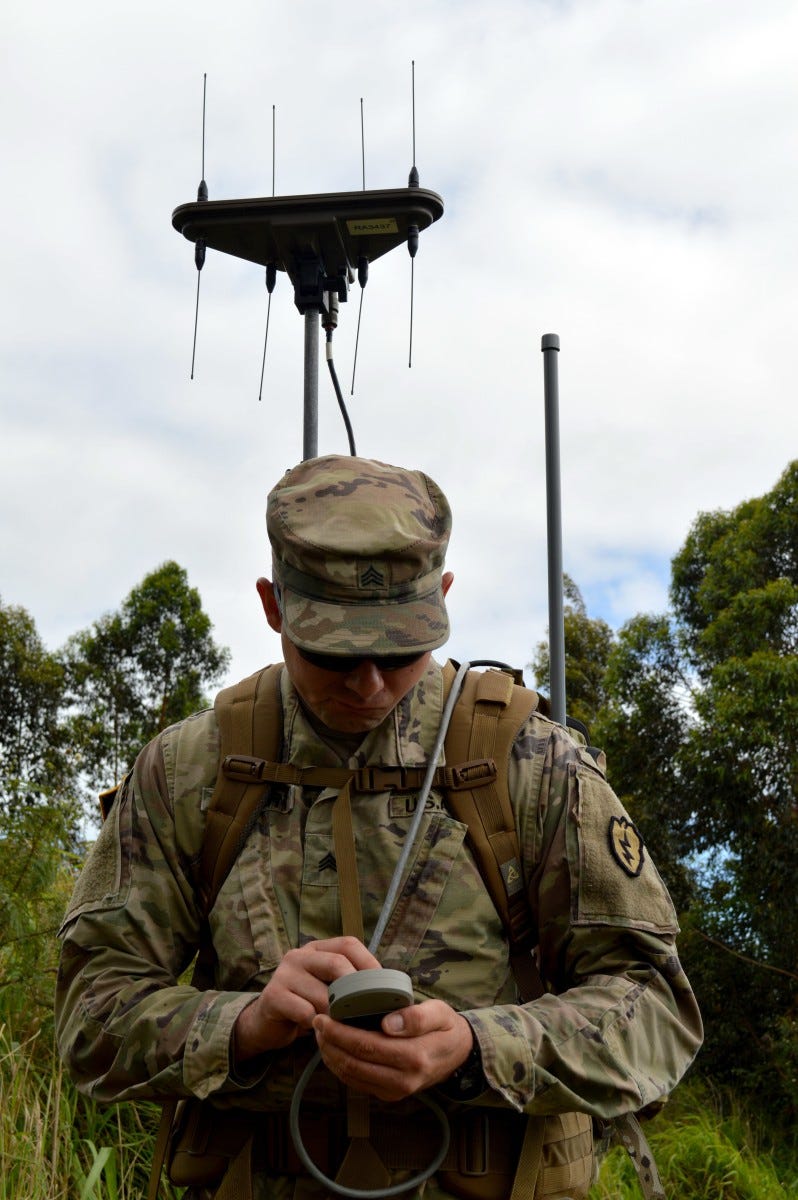
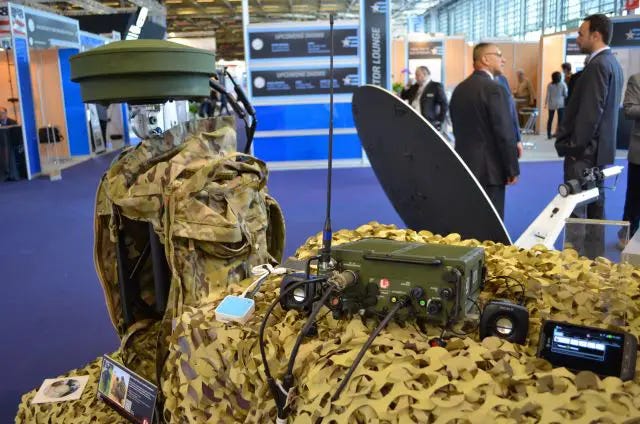
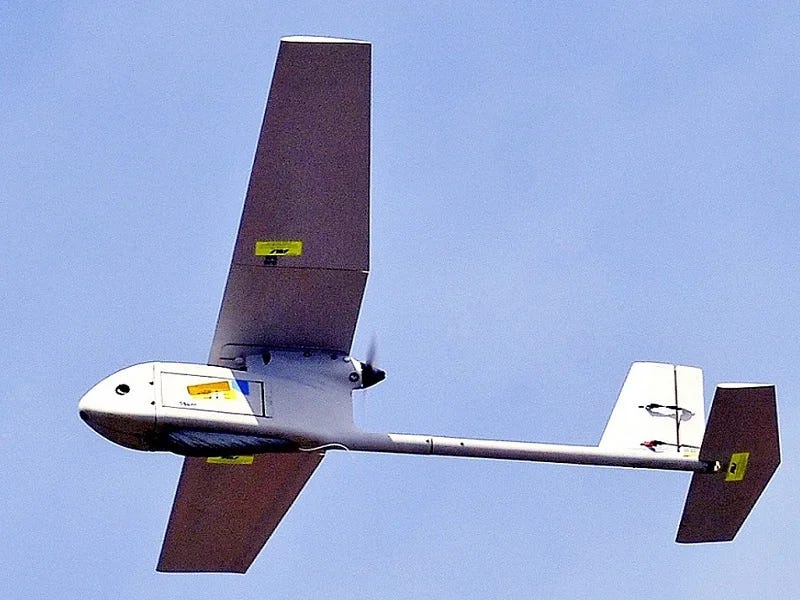
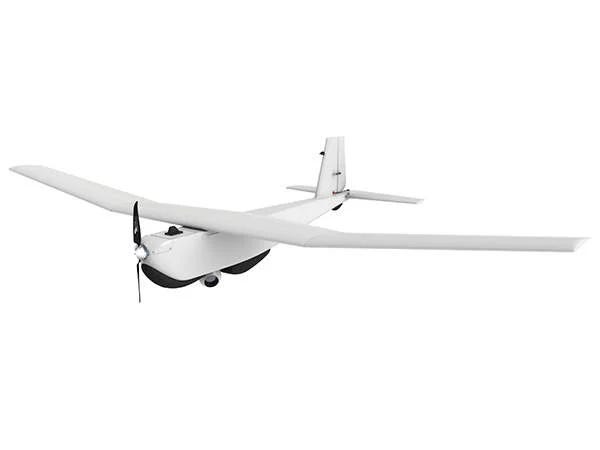
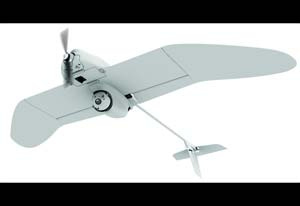
Outstanding article. Without thinking this stuff through - in advance - you will get yourself and/or others killed. Pretty and nifty technology to make things easier will get you killed (e.g., ALE.)